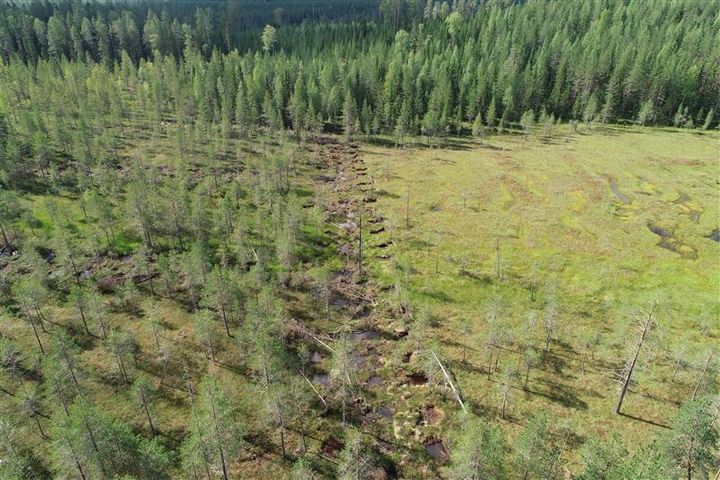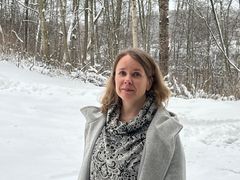Monitoring Study Completed: Restoration Brings Peatland Vegetation Closer to Pristine State
A Finnish monitoring study demonstrates that peatland restoration can bring vegetation closer to its pristine state within a decade. The effects of restoration, however, vary between different peatland types. According to the newly published study, active and concrete measures are required for peatland recovery. The findings provide important insights for national restoration plans to implement the EU Restoration Regulation.

The study, coordinated by the Finnish Environment Institute, the University of Jyväskylä, and Metsähallitus Parks & Wildlife Finland, monitored vegetation changes in restored peatlands that had been previously drained for forestry after two, five, and ten years of restoration. In addition, vegetation in undrained, relatively pristine peatlands and drained but unrestored peatlands were monitored to distinguish the effects of restoration.
“Restoration affected peatland vegetation as intended. Species typical for pristine peatlands, especially Sphagnum mosses, became more abundant, while forest species that had benefited from the drainage decreased. However, full or near-full recovery of peatland vegetation requires much longer than ten years”, says Senior Researcher Merja Elo from the Finnish Environment Institute. “A similar study design has not been implemented anywhere else in the world,” she adds.
Restoration of a forestry-drained peatland is done by filling or blocking drainage ditches to raise the water table level. Restoration plays an important role in Finland, where over half of the country’s peatlands have been drained, mainly for forestry and agriculture. Drainage of 4.7 million hectares has had, and continues to have, detrimental impacts on biodiversity. Additionally, drained peatlands are significant sources of greenhouse gas emissions and waterborne nutrient loading. Successful peatland restoration supports not only biodiversity but also climate goals as well as improves water quality. Understanding the long-term effects of restoration is especially timely given the preparation of national restoration plans .
“As a country rich in peatlands, Finland has a global responsibility to conserve peatland ecosystems. It’s vital to conduct research and produce knowledge that can also benefit other countries,” says Elo.
Results Vary Between Peatland Types
The probability of restoration success was higher in relatively nutrient-rich peatland types, such as oligotrophic and mesotrophic pine mires and open mires. However, in nutrient-poor pine mires and open mires, restoration did not always lead to the desired changes, and in some cases, vegetation in these sites became more similar to vegetation in drained sites.
In drained peatlands where no restoration measures were taken, forest shrubs and mosses continued to increase throughout the monitoring period. Although ditches were re-opened in some sites, this did not explain the systematic changes observed. It is thus unlikely that drained peatlands will recover toward a pristine state on their own in the near future; active restoration is necessary to improve their condition.
“Our findings provide valuable information on factors that can be better considered in targeting and assessing the need for restoration,” says Santtu Kareksela, Service Owner at Metsähallitus Parks & Wildlife Finland.
Collaboration Enables Extensive, Long-Term Monitoring
The research is based on a unique peatland restoration monitoring network coordinated by Metsähallitus Parks & Wildlife Finland, the University of Jyväskylä, and the Finnish Environment Institute. The network includes 151 sites across Finland, monitored for over 10 years.
“Our monitoring network is structured like a scientific experiment: vegetation was monitored both before and after restoration, and the network includes pristine and drained control sites. This comprehensive experimental design allows the network to produce reliable, evidence-based data on the effects of restoration,” explains Professor Janne S. Kotiaho from the University of Jyväskylä.
The peatland monitoring network has been funded and supported over the years by Finland’s Ministry of the Environment and the EU LIFE program (Boreal Peatland LIFE Project and Hydrology LIFE Project). Monitoring continues under the Priodiversity LIFE project.
Keywords
Contacts
Merja EloSenior Researcher+358 (0)29 525 1254
Tel:+358 (0)29 525 1254merja.elo@syke.fiSanttu KarekselaService ownerMetsähallitus Parks & Wildlife Finland
Tel:+358 (0)40 660 2283santtu.kareksela@metsa.fiJanne KotiahoProfessorUniversity of Jyväskylä
Tel:+358 (0)50 594 6881janne.kotiaho@jyu.fi,Media service at Finnish Environment Institute
Our Media Service provides information on research, helps journalists find experts for interviews and provides photos for media use.
Our Communication experts will answer your inquiries on weekdays from 9 am to 4 pm.
Images

Links
Finnish Environment Institute - We build hope through research.
Finnish Environment Institute
Latokartanonkaari 11
00790 Helsinki
+358 295 251 000
It is time to move beyond solving environmental problems one by one, to systemic sustainability transformations. The Finnish Environment Institute (Syke) contributes to building a sustainable society through research, information and services. The Finnish Environment Institute is a research institute with 700 experts and researchers located in Helsinki, Oulu, Jyväskylä and Joensuu.

Subscribe to releases from Suomen ympäristökeskus
Subscribe to all the latest releases from Suomen ympäristökeskus by registering your e-mail address below. You can unsubscribe at any time.
Latest releases from Suomen ympäristökeskus
Nuoret vaativat merkittäviä muutoksia ruuan kulutukseen ja tuotantoon16.12.2025 12:00:00 EET | Tiedote
Nuorten ruokaraati vaatii avointa ja tutkittua tietoa ruuasta – sen alkuperästä, tuotantotavoista ja vaikutuksista ilmastoon, luontoon ja hyvinvointiin. Ilman selkeitä faktoja vastuulliset kulutusvalinnat eivät ole mahdollisia. Nuoret luovuttavat kannanottonsa kansalliseen ruokastrategiaan 2040 maa- ja metsätalousministeriön tilaisuudessa 16.12.2025.
Kommunernas utsläpp fortsätter minska – trafikens andel av utsläppen ökar16.12.2025 06:00:00 EET | Pressmeddelande
Enligt förhandsberäkningsuppgifterna för 2024 minskade Finlands växthusgasutsläpp enligt Hinku-beräkningsreglerna med cirka fem procent jämfört med föregående år. På lång sikt har utsläppen sedan år 2005 minskat med 40 procent och jämfört med år 1990 med 43 procent.
Kuntien päästöt laskevat edelleen – liikenteen osuus päästöistä kasvaa16.12.2025 06:00:00 EET | Tiedote
Vuoden 2024 ennakkolaskentatietojen perusteella Hinku-laskentasääntöjen mukaiset Suomen kasvihuonekaasupäästöt laskivat noin viisi prosenttia edelliseen vuoteen verrattuna. Pitkällä aikavälillä vuodesta 2005 lähtien päästöt ovat vähentyneet 40 prosenttia ja vuoteen 1990 verrattuna 43 prosenttia.
Viikkokatsaus 15.–19.12.202511.12.2025 12:59:58 EET | Tiedote
Hei! Tässä tiedoksesi meillä Suomen ympäristökeskuksessa ensi viikolla ilmestyviä tiedotteita, uutisia, kampanjoita, blogeja ja uutiskirjeitä. Mukana myös tulevia tapahtumia ja webinaareja. Jakelemme viikkokatsauksen torstaisin STT:n kautta. Koosteet löytyvät myös STT-uutishuoneesta, josta voit tilata kaikki Suomen ympäristökeskuksen tiedotteet.
Viikkokatsaus 8.–12.12.20254.12.2025 12:30:18 EET | Tiedote
Hei! Tässä tiedoksesi meillä Suomen ympäristökeskuksessa ensi viikolla ilmestyviä tiedotteita, uutisia, kampanjoita, blogeja ja uutiskirjeitä. Mukana myös tulevia tapahtumia ja webinaareja. Jakelemme viikkokatsauksen torstaisin STT:n kautta. Koosteet löytyvät myös STT-uutishuoneesta, josta voit tilata kaikki Suomen ympäristökeskuksen tiedotteet.
In our pressroom you can read all our latest releases, find our press contacts, images, documents and other relevant information about us.
Visit our pressroom